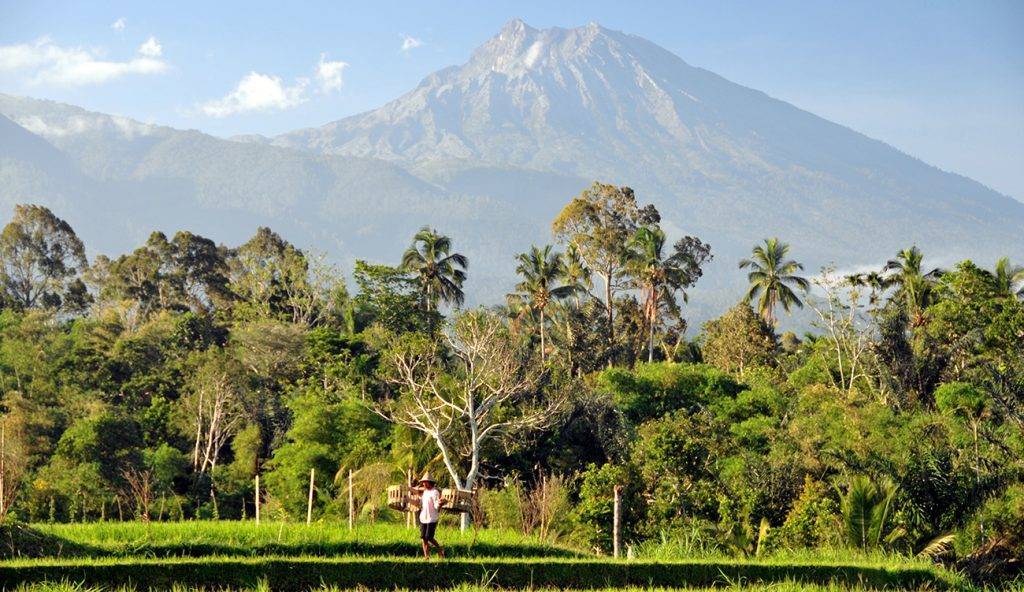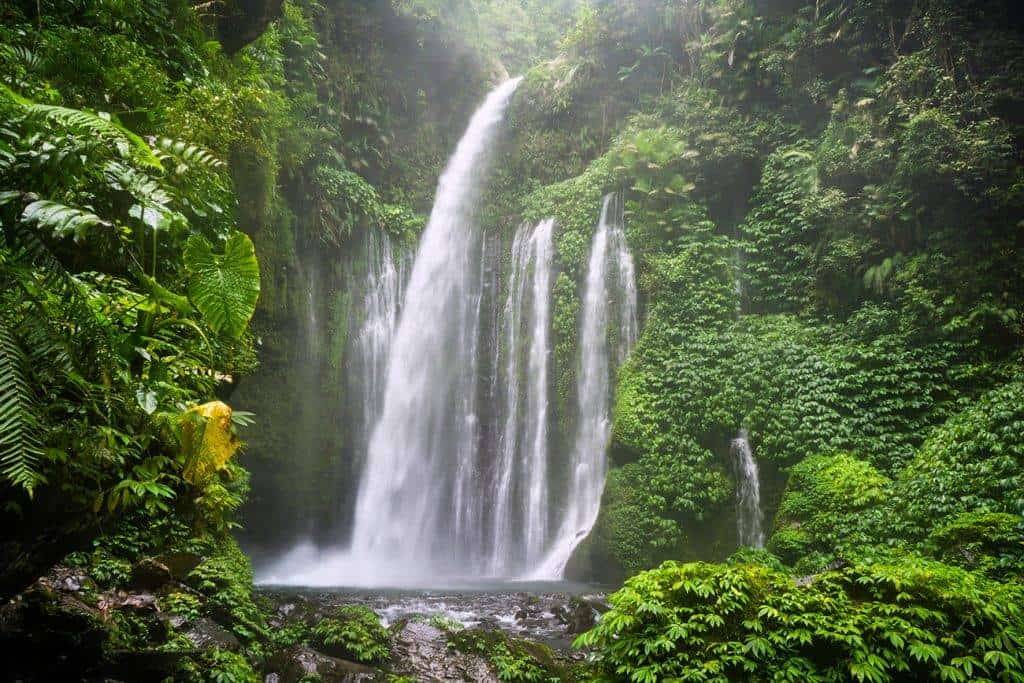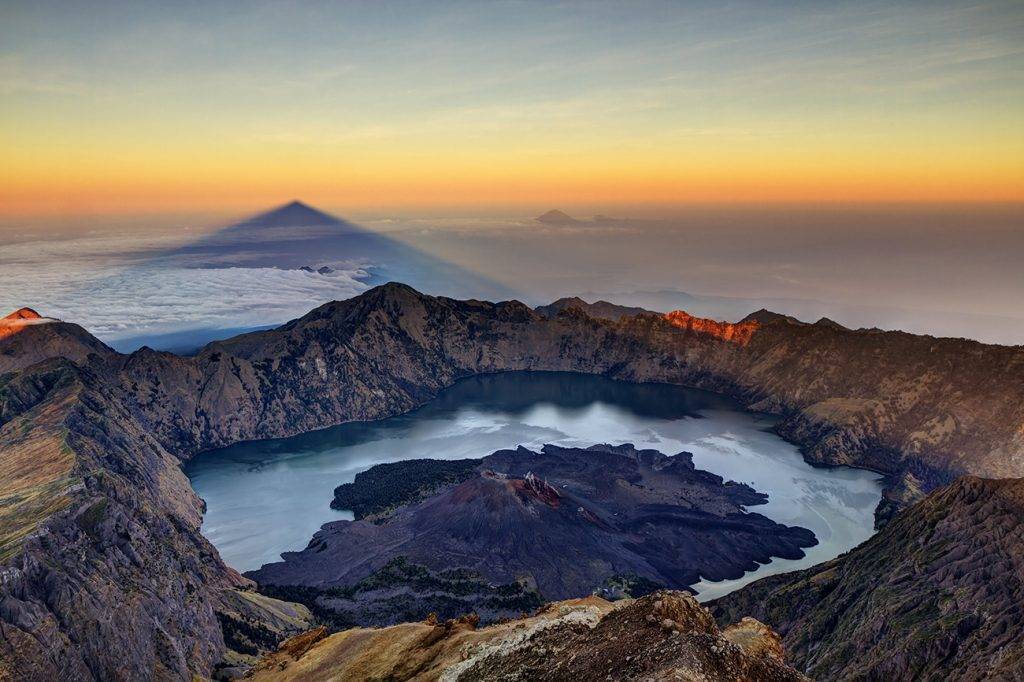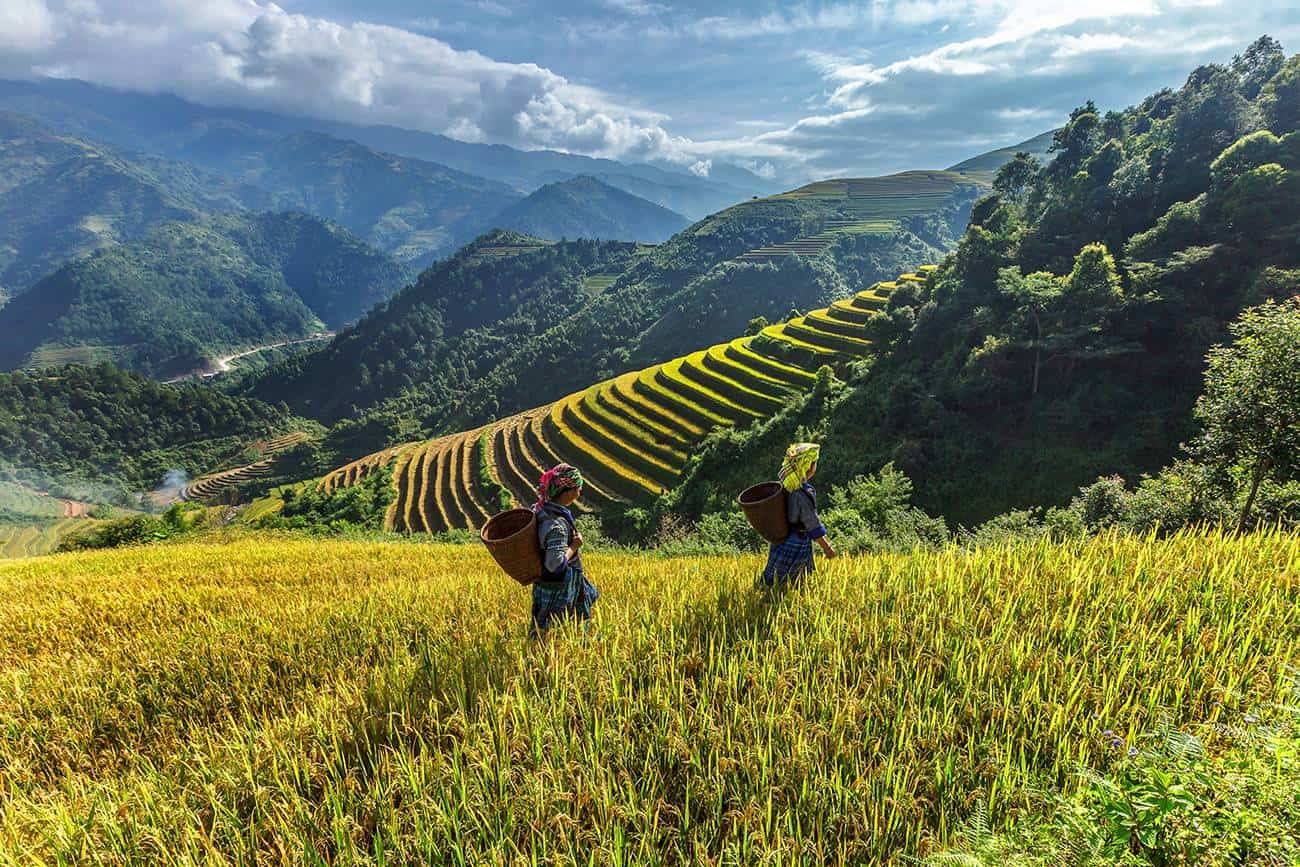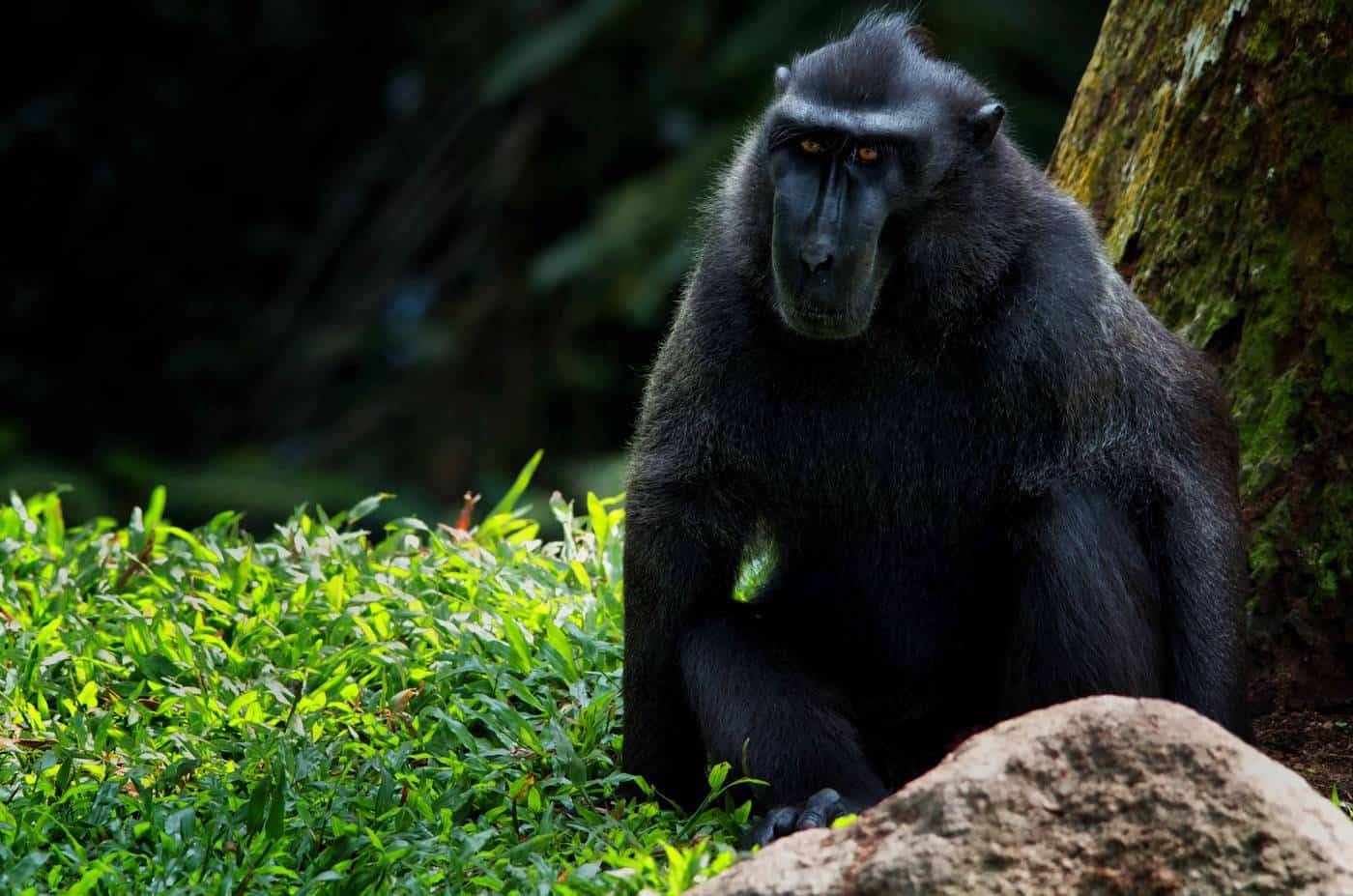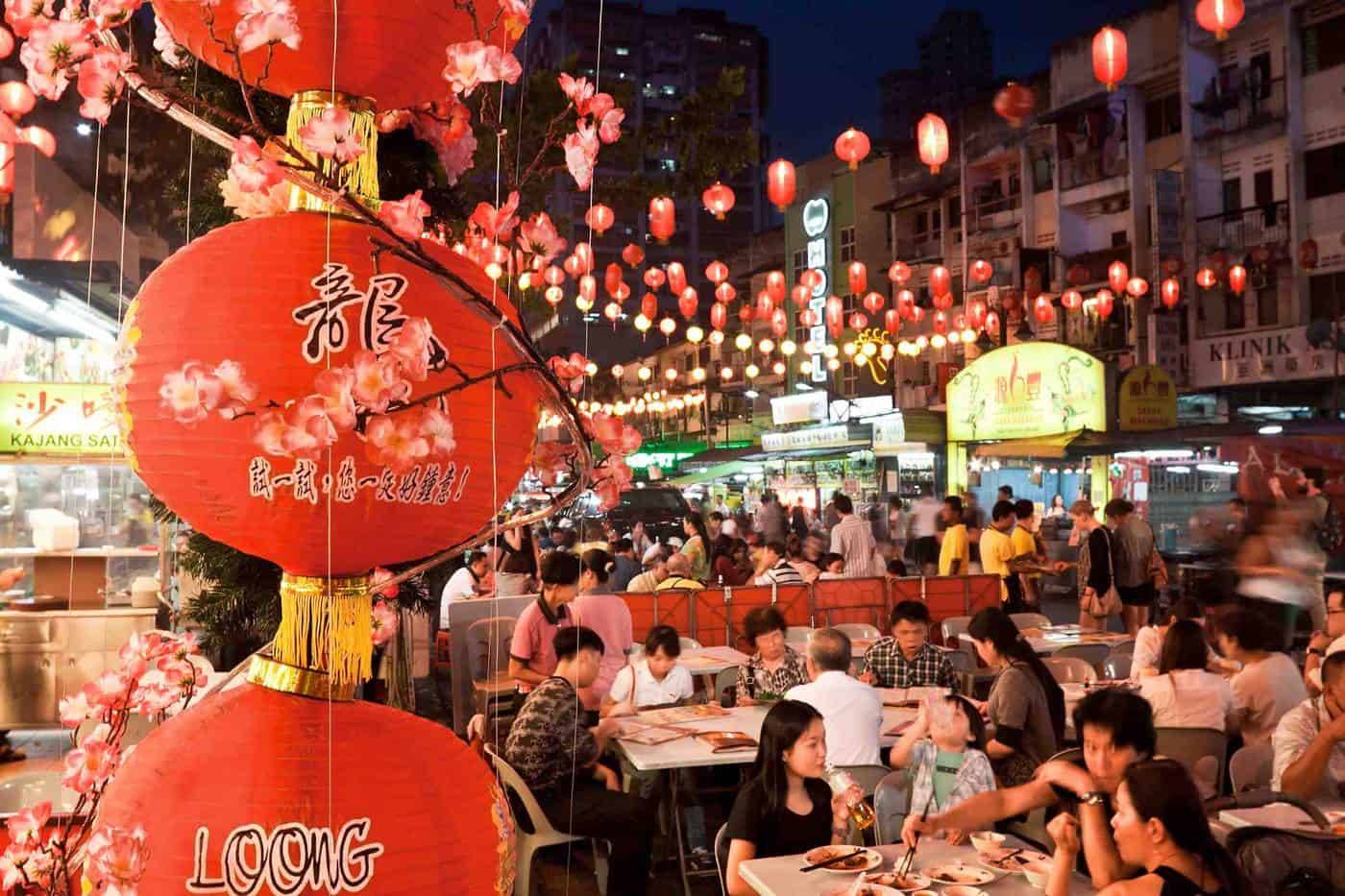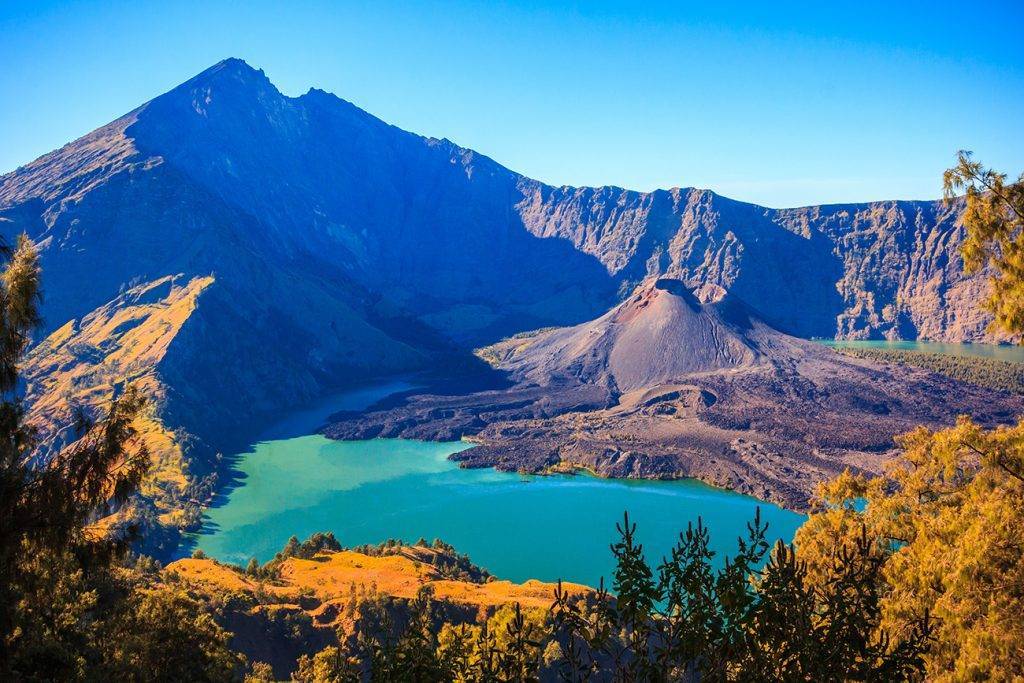
GUNUNG RINJANI SUMMIT HIKE
Gunung Rinjani National Park is more than 40 000 hectares large, volcanic zone covered with tropical fauna and flora. Gunung Rinjani (3726 m) is not to be overlooked. Situated at the heart of the park, also known as the “Ring of Fire”, this active volcano is considered to be a sacred place and it holds a spiritual significance for the local inhabitants.
Although the slopes of Mount Rinjani are smooth and plain, solely veiled by a coat of ash, the rest of the national park blooms with greenery. Especially, in the wet season, abundant foliage quickly spreads across the hills and hundreds of waterfalls tumble through the thick vegetation, just to amplify the whole image.
THE SOUTHERN SLOPES OF MOUNT RINJANI
Tetebatu lies on the southern hills of Gunung Rinjani and it is a quiet, picturesque spot, perfect for nature lovers. From here you can explore the nearby Jukut Waterfall and craft village Pondok Tetebatu.
Further up, there is a small village of Sapit with wonderful views down to the east coast and it allows stunning walking tracks through the Monkey Forest and the Sembalun Valley.
Approaching Rinjani via a long, steep road, another very pretty countryside area comes to sight – Sembalun Lawang. This place offers numerous outdoor activities, such as mountain biking, hiking and ecotourism.
Sembalun Lawang is also the starting point to the Mount Rinjani summit hike.
THE NORTHERN SLOPES OF MOUNT RINJANI
If you travel from Senggigi, via the north, you will need to pass the small villages of Batu and Senaru.
Many travellers would say that this is the most scenic part of the national park. Gile and Tiu Kelep Waterfall are the two most visited waterfalls in Lombok; a local myth has it that, every time you swim behind the Tiu Kelep waterfall you will become a year younger.
There are several outlying villages in this sparsely populated area that are well-worth of seeing. Traditional houses are made of bamboo and thatch and the native Sasak people lead a fairly primitive life.
Apart from the Mount Rinjani trekking, there are numerous nice walkways through the rice fields and thick forest in this area.
GUNUNG RINJANI SUMMIT HIKE
From a distance, Gunung Rinjani (3726 m) appears to rise in solitary glory from the plains, but in fact, the entire area is a throng of bare summits, wreathed in dense forest. It is the second highest volcano in Indonesia. In fact, hikers and climbers are more attracted by the magnificent crater-lake Danau Segara Anak, rather than the actual cone summit of Gunung Baru.
WHICH HIKING ROUTE TO CHOOSE TO REACH THE SUMMIT OF MOUNT RINJANI
There is a number of possible tracks to the summit of Mount Rinjani:
1. The shortest track is from Senaru to the crater rim, which makes it to be the most popular one. This route takes 2 days/1 night.
2. For a longer trip, a path continues from the crater rim and descends into the crater-lake. It is a very steep and scary climb down with metal handrails and some ropes, but it is absolutely worth of doing as once managed to get down you can have a soothing bath in the lakeside hot springs. You will need to return the same way to Senaru. This trip takes 3 days/2 nights.
3. Another way to get up to the summit of Mount Rinjani is starting from Sembalun Lawang. It takes 7-8 hours to the first camp – Plawangan II. You will spend a night here to recharge your batteries so that you can attack the summit the next morning. It is an extraordinarily tough haul up to the summit (6-7 hours return to the camp where you stay overnight one more time. The third day is all about descending to the lake to easing the tired muscles in the hot springs and come back to Sembalun Lawang. The whole tour takes 3 days/2 nights.
4. The most complex exploration of Mount Rinjani involves ascending from Sembalun Lawang, taking the summit, then the lake and descending to Senaru – this option has got the advantage of getting the most exhausting ascent over while you are still fresh. This alternative route takes 4 days/3 nights.
NOTE
Be advised that hiking Mount Rinjani is not an easy task. It requires a certain level of fitness and a local guide is essential. Every hiker MUST register at the Rinjani Trek Centre in Senaru or Sembalun Lawang and will need some reliable equipment.
For more information check out http://rinjaninationalpark.com/
WHEN TO TRAVEL
The best time to visit the Rinjani National Park is from June until September when dry weather and great views can be enjoyed. The park is closed in the wet season (Nov-Mar).
HOW TO GET THERE
You can fly to Bali/Denpasar and take a Perama shuttle bus to Padang Bai, from where a speedboat will bring you to Lombok/Senggigi. Here you can readily organise your expedition to Mount Rinjani in any of the plentiful travel agencies. Always remember to negotiate the price!
If you do not wish to stop in the Gili Islands, there are also frequent Pelni ships operating between Bali/Padang Bai and Lombok/Lembar, which is probably the cheapest way to get to Lombok (4-5 hours trip)
There is an international airport in Lombok/Mataram as well, but the flights tend to be quite expensive.
For all international flights check out www.skyscanner.com or www.momondo.com
